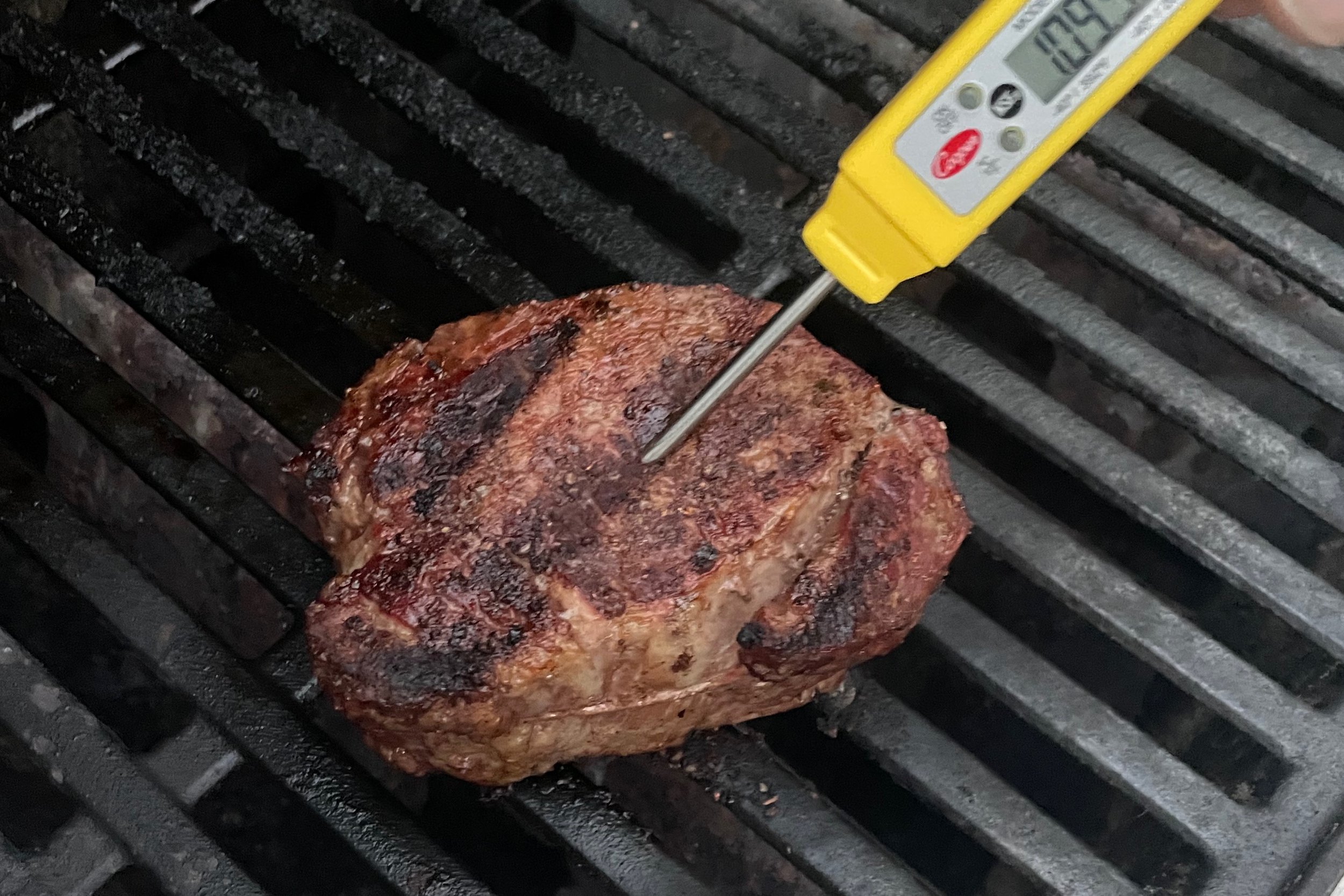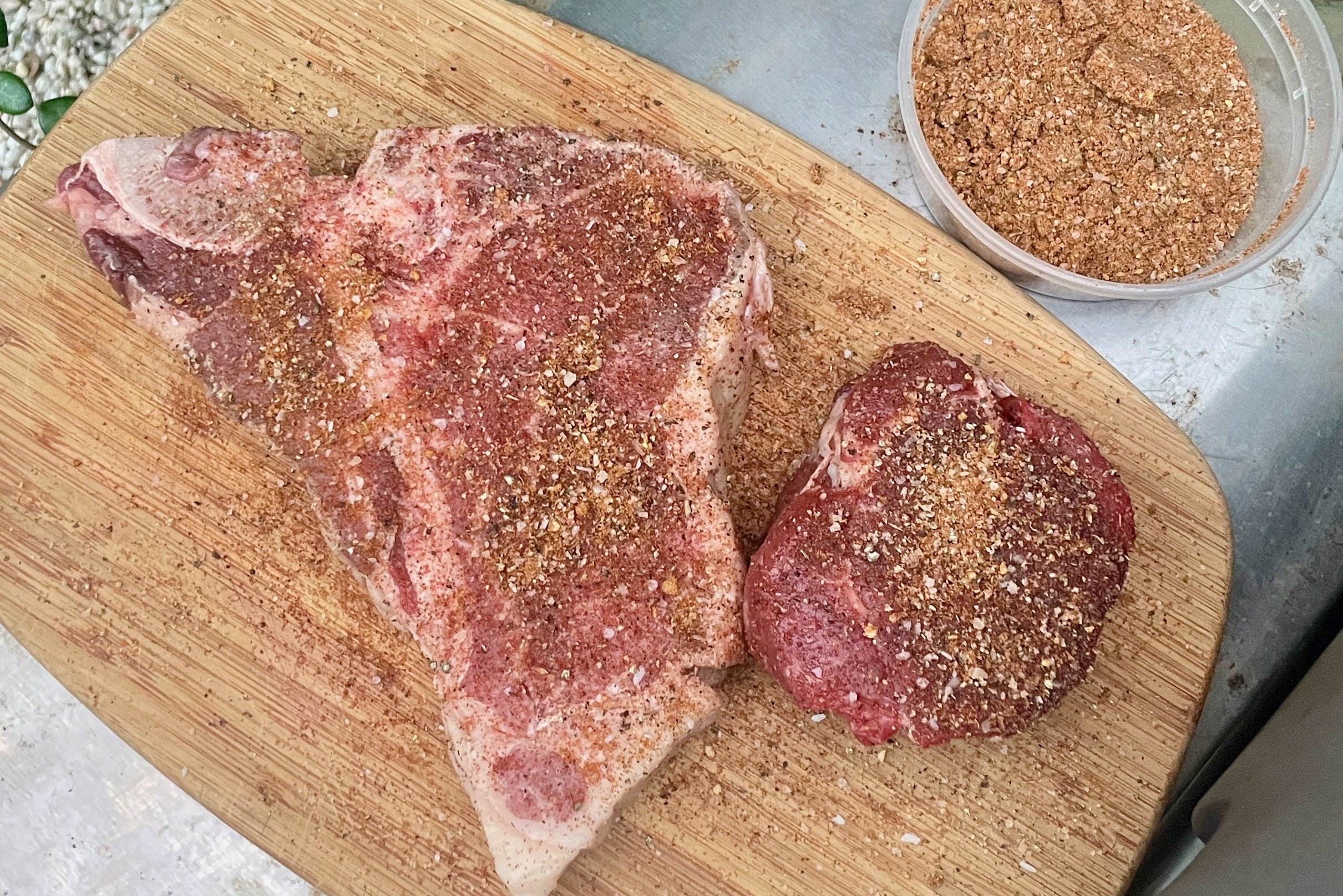Grilling 101: Beef
Grilling quality beef can be intimidating. You’ve invested in the best cuts available, so it goes without saying that you want to ensure you cook them to perfection. But with some basic knowledge and guidelines, anyone can achieve success on the grill. Following are our top tips for grilling steaks and filets at home.
Selecting the Best Cut of Beef
From a lean but tender beef tenderloin filet to a decadent marbleized ribeye, there's something for everyone when it comes to selecting the best cuts of beef for grilling. Key questions to consider include your diners’ preferences, the number of people you’re grilling for, and how you’ll serve your entree.
No matter which cuts you choose, it should go without saying that using the best quality, all-natural beef you can find will ensure you get the best flavor. That’s why our go-to beef is Painted Hills Natural Beef from Oregon. You can read more about why this product is so good here.
One Steak is Better Than Two
A tip we often share with customers who are grilling for two is to consider grilling one thick steak instead of two smaller cuts. This works well for cuts like ribeye, porterhouse and strip steaks. Thicker cuts require longer cooking times, which allows the flavors of the meat to develop. Sharing a large, thick-cut steak that you then slice to serve or split between two people results in the ultimate flavor.
Bone-in or Boneless?
This is a common question, particularly for ribeyes. Ultimately, it’s a personal decision and there is no right or wrong answer. Generally, we like bone-in cuts for slow cooking, which allows enough time for the flavor from the bone to be incorporated into the beef. Because the grilling process is typically just 8-12 minutes, the flavor from the bone does not have enough time to impart deep flavor into the meat.
Additionally, bone-in cuts are more difficult to cook evenly because the area around the bone takes longer to cook, often resulting in a steak that is well done in some areas and rare in others.
The Best Cuts for Slicing
For fajitas, steak salads and other entrees where you’ll be slicing your steaks for serving, we recommend skirt steak, flatiron or teres major. Teres major is the most tender of these cuts, while flatiron has the most marbling.
Seasoning
If you’re using beef that has been fed and raised properly, the flavor should stand on its own and can be enhanced with just salt and pepper. However, you can also build upon the flavor with a dry rub or marinade before cooking.
Our go-to seasoning for grilling is Ted’s Signature Dry Rub, which is a balanced mix of salty, sweet and savory flavors.
When using dry rub on your beef, be careful about how much additional salt you use. And don’t leave the rub on for too long before cooking as it will draw out the moisture.
Certain cuts of beef, such as skirt steak and hanger steak, take well to marinades because the acid in a marinade breaks down tissue and helps tenderize the meat. Marinating these cuts for 1-3 hours in advance will help ensure they stay tender when cooking.
A simple marinade can be made with a mix of soy sauce, Worcestershire sauce, lemon juice, minced fresh garlic, salt and pepper.
Preparing the Grill
Regardless of whether you are using a gas or charcoal grill, there are several steps to follow:
You want two zones of heat: A zone with high, direct heat for searing, and a zone with lower heat for cooking through more slowly.
It is not necessary to oil the grates of the grill, but if you choose to do so, use canola oil or similar oil with a low smoke point.
The Cooking Process
Bring your steaks to room temperature before placing on the grill for more even cooking.
Start in the high heat zone to get a sear. Carefully place the steaks on the grill and cover. They should cook between 2-5 minutes, depending on the thickness of the cut, and whether or not it has a bone (cuts with bones will take longer to cook).
Flip the steaks to sear the other side on the high heat zone, covered, for 2-3 minutes.
As always, use a digital meat thermometer for fail-proof results. Insert the thermometer into the center of the steak to check the temperature:
Rare - 120ºF
Medium Rare - 125ºF
Medium - 135ºF
Well-done - 155ºF
If additional cooking time is needed, move to the low heat zone and continue to cook, uncovered, for another 2-3 minutes before checking the temperature again.
Serving
Always let your steaks rest for about 5 minutes before slicing to let the juices settle - you want the juice to remain with the meat, not run all over the cutting board.
If you are serving your steak sliced, always cut against the grain to ensure a tender steak. Cutting with the grain elongates the muscle tissue and will result in a stringy and chewy texture.
One final tip: If you’d rather let us do the work, you can have us grill your selections Tuesday through Friday evenings for dining in or to go!





